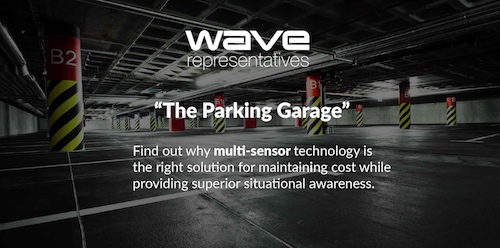
By David Marsh, Wave Representatives, San Diego, CA
Since their introduction over ten years ago, multi-sensor video surveillance cameras have proven to provide an excellent accompaniment to the traditional single-sensor video surveillance camera.
Some background.
Multi-Sensor video surveillance cameras do an outstanding job in helping customers to eliminate camera blind spots, reduce camera counts, reduce switch port usage, and reduce labor requirements for installation. 180° cameras provide visual benefits similar to taking a panoramic picture on your phone with the added bonus of moving images or frames. Other multi-sensor cameras can provide 360° using multiple images from a single vantage point.
I?ve been directly involved in educating and designing solutions for both end users and systems integrators for the last decade. The industry has overwhelmingly adopted this technology over the last few years, this not only indicates a shift in how surveillance is designed but on the available choices that end users are presented with.
The multi-sensor camera inception was fueled by customers wanting the ability to view large areas similar to what pan-tilt-zoom (PTZ) cameras provided with the added benefit of capturing everything all the time. Unless manned or powered by advanced analytics, PTZ cameras can often be pointing in the wrong direction during an incident. However, PTZ cameras using larger optics can zoom into scenes providing much greater forensic detail when needed. Therefore, for the right application, we often see a blend of the two complimentary technologies providing the greatest benefit.
TOP TEN THINGS TO KNOW BEFORE IMPLEMENTING:
- DO???verify that the camera model integrates with your VMS (Video Management Software) if you?re adding to an existing environment.
- DO???verify the available resolutions and frame rates from the vendor. In other words quality and quantity of images you review after an incident.
- DO???verify how long the vendor has provided multi-sensor cameras and if they have a selection of options versus a one size fits all approach.
- DO???verify your security integrator is knowledgeable and has references from installations with the technology before purchasing your solution from them.
- DO???have your systems integrator provide a demonstration of the camera on your premises so you know exactly what to expect in terms of field of view and resolution.
Pixel Density = Horizontal Pixels divided by Horizontal Field of View
Pixel Density = Horizontal Pixels divided by Horizontal Field of View for example a 30′ wide opening covered by a 5 megapixel camera 2592×1944 provides 86 Pixels Per Foot. - DON?T???expect facial recognition or license plate capture by a multi-sensor camera, if they happen to record forensic details that should be considered a bonus, but never purchase multi-sensor cameras with the expectation of capturing faces or license plates. Single-sensor cameras are best suited to provide the required Pixel Density.
- DON?T???over utilize multi-sensor cameras. It?s not a panacea for all situations, but instead, balance multi-sensor with single-sensor surveillance cameras. We recommend ?choke points? entrances (doors, drive ways) should utilize single-sensor cameras while multi-sensor should be utilized for larger areas that are difficult or cost prohibitive to cover; roll up doors, warehouses, outdoor parking garages, parking lots, stadiums, etc.
- DON?T???place Multi-sensor 180
Source: wavereps.com

